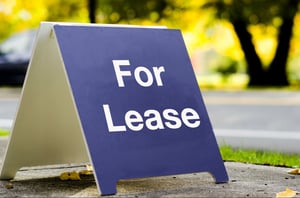The New Lease Accounting Standard is Coming Soon
 Many business owners see their leases --everything from buildings to copy machines-- as just that --a lease. But what they aren't used to seeing are those leases showing up on their balance sheets. If you have a long-term lease of any kind, you'll need to understand the new lease accounting standard, also known as, Accounting Standards Update 2016-02 or Leases (Topic 842). For non-public entities, this standard is set to take affect for fiscal years beginning after December 15, 2019.
Many business owners see their leases --everything from buildings to copy machines-- as just that --a lease. But what they aren't used to seeing are those leases showing up on their balance sheets. If you have a long-term lease of any kind, you'll need to understand the new lease accounting standard, also known as, Accounting Standards Update 2016-02 or Leases (Topic 842). For non-public entities, this standard is set to take affect for fiscal years beginning after December 15, 2019.
Do I Have A Lease?
The first thing you'll need to do to be prepared for the new standard is to take inventory of your current leases. How do you know if you have a lease? Ask yourself:
- Is there an identified asset?
- Do I have control of that asset?
If you said no to one or both of these, then you don't have a lease. If you said yes to both of these, then you have a lease and now need to determine if you have a long-term lease.
A long-term lease is defined as a lease lasting longer than twelve months, and can be for any kind of specific asset being leased, such as:
- Vehicles
- Office equipment such as copy machines
- Building space
- Heavy equipment such as forklifts, tractors, trailers, etc.
Only long-term leases are affected by the new lease standard. Short-term leases will be treated the same way as they have always been.
What is the New Lease Accounting Standard?
According to The Financial Accounting Standards Board (FASB)"The new lease standard will increase transparency and comparability among companies that lease buildings, equipment, and other assets by recognizing the assets and liabilities that arise from lease transactions."
Lessees and lessors will now have to provide additional qualitative and quantitative disclosures to illuminate the amount, timing, and cash flows generated from the leases. What will this higher visibility mean?
How Will The New Lease Standard Affect Business Owners?
Anyone with a long-term lease will now see leases being added to their balance sheets. They'll have a new asset called a "right-of-use" asset and a lease liability that will have to be amortized and expensed over the life of the lease.
The more complicated answer is that this new standard could impact larger goals by affecting your debt covenants which in turn could affect your banking relationship.
Debt covenants can be affected due to the right-of-use asset being classified as another asset and the lease liability being classified as debt on your balance sheet.
When Does It Take Effect?
FASB has made this effective for public companies with fiscal years beginning after Dec 15, 2018, and for private companies the year after.
FASB recommends: "As soon as possible—even prior to the issuance of the new lease standard—business owners should consider creating a transition timeline and action plan."
So how do you get organized?
What To Do Next
There will be a significant amount of legwork to determine the affects of any kind of lease you might have. You'll first need to thoroughly read and understand your lease terms. Then you'll want to assess the impact of those leases and their terms on your balance sheets.
I recently attended a workshop and poured over a 500-page document about the new leasing standards. There's a lot to know, and it cannot possibly be covered in this article. However, our team can help by analyzing your lease agreements so we can determine what impact they will have on your business and financials.
Do I Have To Adopt The New Lease Standard?
No, you don't need to in some instances but these would need to be discussed carefully with your CPA, banker, business owner, etc.
For all who will adopt this standard, you'll want to begin working with your CPA so that you don't wind up behind.
If you'd like to talk to us about the new lease standards, feel free to get in touch here.
Topics: Business Planning & Operations


